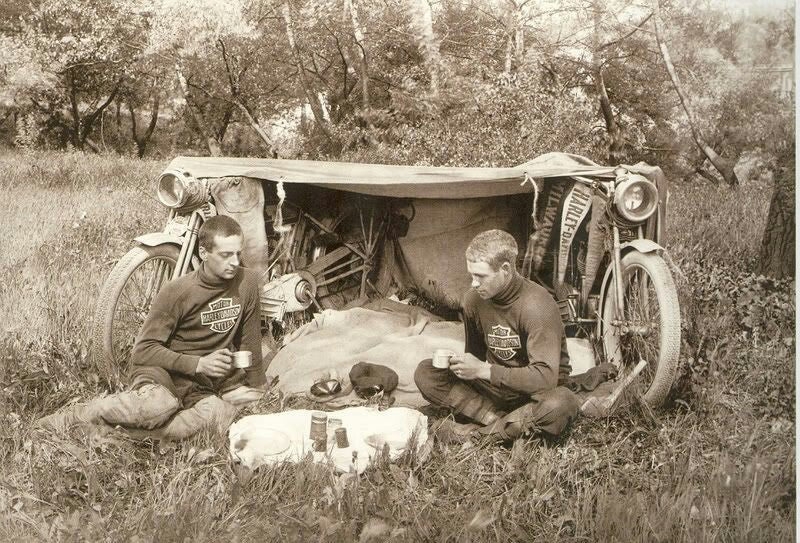
Don’t fret, we’ve thrown together a list of essentials for moto-packing. Before we hop into this list, remain cognizant of the type of bike you have. Don’t get it twisted this is a bagger-free blog, we’re tailoring this packing list to choppers and similar builds. But, where there is a will, there is a way, so don’t feel excluded. Let's get into it:
1. Tools, and a place to put them

2. Clothes, but limit yourself

For most lengths of time and distances, three sets of clothes tend to be all that you will need. If you are riding through different climates/regions, diversify those three sets of clothes. Having high-quality riding clothes also makes life much easier… just saying.
3. Cargo straps, straps, and more straps

A lifesaver and you know it. And I’m willing to bet that most of you reading this article see jerry-rigging as a hobby. However you make it work, they’re always good to have.
4. Rain Gear

Being wet sucks, unless it’s super hot outside. Make sure you keep your sleeping bag or blanket in a waterproof container too, you’ll be happy you did.
5. Camping Gear

There are a lot of compacting tents that are tailored for moto-camping, but a lot of them fall short in many places. While we’re biased towards the Nomad 4, this is our fourth time redesigning and improving the tent. We know what goes wrong with these kinds of tents, and we capitalized on these downfalls. The Nomad is also as compact as it gets, and can still get squeezed into tight spaces. As for sleeping gear, make sure that you have a sleeping pad. Even if you have a thermal bag, the sleeping bag is useless unless you have a thermal sleeping pad. Lastly, a compact camp chair. Sitting on a log is fun, but if you’re on the road for a while a nice comfortable chair is worth its weight in gold.
6. A spare key, and an extra pair of gloves

If you lose your keys, you’re calling a tow. Keep a spare somewhere in your toolkit, or in a lockable case. Make sure your lock keys are separate from your bike keys, you don’t want to lock yourself from your spare. Extra gloves are always smart because of water or any other hazards where they might become unbearable. If you’re working with rain gear, it’s also nice to have a spare for that.
7. Read, damnit

A partial, or for some major reason for motopacking is to get away from it all. This means your phone. Actually, it most blatantly means your phone, so bring a book. Or something. Whatever you know keeps you busy, bring it. Get good at it. Master it. I know someone who learned how to do a Rubix cube. You’ll figure it out.
8. Meet people

Lastly, take half of what you need, and twice the cash. You’ll get better at finding what you need and what you don’t. At the end of the day, everyone’s essential list varies. This method helps you tailor your packing to your needs.



